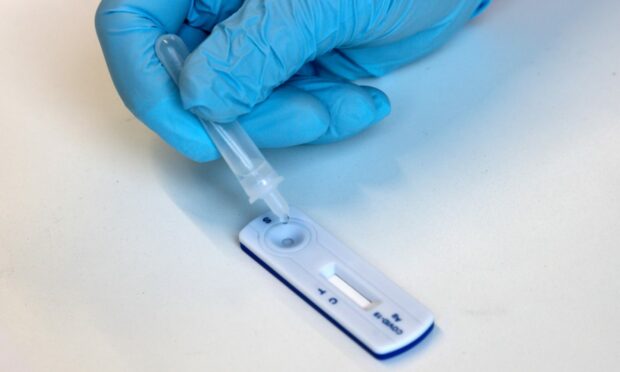With coronavirus still present across Scotland, many people are turning to free lateral flow test kits issued by the government. But how accurate are lateral flow tests and when should you use them?
Medics say mass testing using the devices is a concern because they often do not identify asymptomatic people with Covid-19.
Just as concerning is that just under half of those with symptoms are estimated to incorrectly receive a negative result.
It means negative results could be giving false reassurances to many people who actually have the virus.
This could then lead to an even greater spread if those people then take the decision to socialise or go to work.
They are currently free to order online through the Scottish Government, who are encouraging uptake, or they can be collected at test centres.
What are lateral flow tests?
Lateral flow tests were developed to give a very quick result compared to the more accurate and sensitive polymerase chain reaction (PCR) tests, which take at least a day to be processed as they look for genetic material.
They are antigen tests that do not need laboratory equipment to give a result.
Users simply swab their own nose and mouth and a result is displayed within half an hour or, in many cases, as quickly as a few minutes.
The UK and Scottish governments have urged people with symptoms to take a PCR test instead of a lateral flow.
Does a negative lateral flow test result rule out infection?
The Royal Pharmaceutical Society (RPS) says the tests do serve a purpose but anyone testing negative should not take this as a green light to ignore social distancing and mask wearing.
Andrew Carruthers, chairman of the RPS Scottish Pharmacy Board, said: “Lateral Flow Tests… can provide quick results and work using the same technology as a conventional pregnancy test.
“Generally people who test positive test are required to have the result confirmed with the more reliable “PCR” test through the NHS, and should self-isolate until the results of the PCR test are known.
“Those who test negative but later show symptoms of coronavirus should also be referred to the NHS to follow up with a PCR test, and should self-isolate until the results are known.”
How accurate are lateral flow tests?
He added: “For those who have tested negative and have no symptoms, no additional action is usually required; however, it is important to understand that a negative lateral flow test result doesn’t confirm the person doesn’t have a coronavirus infection.
“It has a lower sensitivity than the PCR test, and it is known that people infected with coronavirus may be missed with this test.
“As a result, it is important that good practice guidelines including social distancing and mask wearing continue to be followed.”
The Scottish Government has stressed only people without symptoms should use the kits as an extra tool to limit the spread of the virus.
Officials say they identify more people who would otherwise have no idea they are infected.
Lateral flow tests do not mitigate all covid restrictions
But its official guidance to users states those who receive a negative result “must not regard themselves as free from infection” and should continue to wear a mask when required.
This is because the test could be a false negative and they may also go on to acquire the virus in the period before any further test.
The UK regulator that approved use of the rapid tests has also made clear a negative result “may mean that you are infectious but the test has not been able to detect it”.
